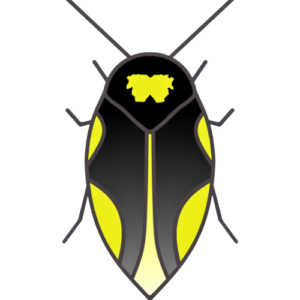The genus Gyna is present in captivity with 6 species, not all equally widespread:…
- Centurio
- Caffrorum
- Lurida
- Capucina
- Bisannulata
- Sculpturata
All come from central and southern Africa with location patterns that vary depending on the individual species.

To the eye they appear smooth with teardrop-shaped silhouettes and “aerodynamic” (a description given only on the basis of my personal association of the shape of the adults with that of the wing profile of airliners)
The legs are short and “spiny”, with different proportions between the front ones, which are stockier and shorter, and the rear ones. This particular shape makes them suitable for digging in perfect harmony with their lifestyle, precisely, fossorial.
The nymphs can vary in color from a classic dotted brown, as in G. capucina and G. centurio, to a non-uniform and mottled base color with various shades of yellow and brown, as seen in G. lurida and G. caffrorum. The adults, while not abandoning the fossorial lifestyle, will show themselves much more on the leaf litter, especially in particular periods such as mating and night hours, showing off courtship rituals, short flights or entire laps around the box suspended in mid-air. The nymphs will practically always remain buried, with the exception of those of Gyna caffrorum, usually less shy.
Adults of the genus Gyna have fully functioning wings, which even allow them to change direction during flight, and adhesive pads on the tarsi of all their legs, a feature that helps make them excellent climbers.
NB the higher the temperatures, the easier it will be for adults to take flight.
Setting up the box
To avoid repetitions, please refer to the same section of the Pycnoscelus surinamensis data sheet for the part dedicated to choosing the container and ventilation of the box.
To better understand how to organize ourselves, let’s start from this assumption: they are cockroaches that spend most of their life underground and among dry leaves. It will therefore be essential to use a box that is not too high, since they will use the “aerial” part very little, and insert about 5/10 cm of substrate, based on the population of the colony (I recommend not filling it to the brim with soil but leaving a few cm so as to prevent any escapes of particularly active specimens). As a base we can use coconut fiber or peat, absolutely indifferent as regards the success of reproduction and the health of the specimens, mixed with dry leaves in quantity. Barks and trunks will also be very welcome, as they represent the only “holding surface” provided, and will gather both nymphs and adults, with two major advantages for the breeder: easily checking the health of the specimens and verifying the presence of any births without having to mix the soil (this act could be very stressful, especially for pregnant females).
The leaves, unlike other species such as many cockroaches of the Corydiidae family, will not represent a fundamental part of the diet, contributing instead to the aeration of the soil, to the survival of the organisms present in the substrate itself, increasing the capacity to retain humidity and providing shelter.
Humidity
Almost all of them are quite resistant to the humidity of the substrate; therefore, I refer you to the end of the sheet where the interspecific differences will be explained.
Diet
The diet of nymphs and adults is quite similar, both feed a lot on fruit (especially appreciated will be banana, apple and mango), some vegetables (such as carrots, courgettes and cucumbers) and protein sources such as dog/cat biscuits (these will be essential for the development of the young and for the pregnancy of the females). Other appreciated foods will be: flake food for fish, pond sticks, dry bread, meat scraps, pollen etc.
I advise against feeding solanaceous plants such as potatoes, tomatoes, peppers etc. and particularly acidic fruits such as pomegranate, lemon, grapefruit etc. However, particularly sweet oranges and mandarins can be given.
Temperature
Virtually all the species I breed can be safely kept at room temperature all year round. Personally I keep Gyna centurio, caffrorum and lurida at 18-20 degrees in winter and 26-30 degrees in summer with obvious differences in their metabolism. In summer their development will be extremely rapid and most of the mating and reproduction will take place, while as temperatures drop their activity will also decrease to the point of stopping growth in the coldest periods. If the colonies are very numerous my advice is to follow the seasonal rhythm and let them “set” on our climate year; by doing so we will have the emergence and growth of the youngest nymphs in spring, the start of mating and reproduction in summer and early autumn and the death of the old specimens at the end of autumn/early winter.
This process is not recommended if you are dealing with a few specimens (I am talking about a starter of 10/20) as they could develop independently from our temperature cycle. I bring you a personal example below:
In mid-summer 2023 I purchased the starter set of 10 Gyna capucina. The breeder selected 3 sub-adult females and 2 sub-adult males, the rest of the nymphs were too small to be sexed and were chosen randomly. The first female became mature at the end of July, followed by the first male a few weeks later (around the beginning of August).
After the first pair, the other specimens began to mature, so I found myself at the end of summer/beginning of autumn with 3 adult reproductive females and 3 males, 2 older and one just become an adult. Given the premises and having noticed the females’ abdomens getting bigger and bigger, I made the decision to keep one side of their box warm thanks to the use of a heating mat, all to avoid abortions from the few reproductive specimens I had.
Around January I had the first nymphs born from the first female, very small and very fast, followed by the nymphs of the second female in February and the third in March (the first probably gave birth in two parts since I found some newborn pups shortly after the birth of the last female).
If in this situation I had decided not to heat the colony I would probably have faced the death of the adult specimens without any of them being able to carry any pregnancies to term, the low temperatures would have prevented them from doing so, with the consequent loss of the colony.
A similar situation also occurred with the Gyna caffrorum but with a translation of a few months. The same year as the capucina, 2023, I also purchased a starter of the previous species, again in the summer, but with an important difference: they were all extremely small nymphs. This detail meant that, while the capucina females mated and carried their pregnancy to term, the caffrorum instead concentrated on growing and preparing for the completion of the last moult: the maturation one. When the first cold weather arrived, I therefore only had the emergence of a male, who died shortly after, and the blocking of the development of all the other specimens. By not warming them, this situation continued until the first warm weather arrived in the spring of 2024. In fact, at the beginning of the summer, all the sub-adults moulted, shortly afterward the mating, gestation and, at the end of the summer, reproduction began with the birth of countless little ones!
Now I find myself in exactly the same situation as the first year with both species, this allows me to leave the caffrorum in the cold without risking abortions and does not allow me to do the same with the capucina (still given the small number of specimens and the long development that is required for the maturation of the females).
Next year I will definitely keep the capucin colony at home temperature, certainly losing a small part of the reproductions but having the advantage of setting them on my annual temperature cycles.
Mutation and development
There is not much to say except that there is absolutely no need to worry about it. Unlike what happens with arboreal cockroaches or other arthropods that live above the substrate, which use gravity and vertical supports to molt, Gyna, and in general all fossorial cockroaches, molt directly on the ground or under it. This allows them to complete the molt process without a hitch even in less than favorable conditions (a possible shipment comes to mind, moving the box at this specific time, the disturbance caused by the other specimens, etc.).
Let’s talk now about the needs of individual species, so you can consider the above as a valid guideline to which you will have to add the information reported below (and that found on other sources, of course)
Gyna centurio
I am particularly attached to this species as it was in the temporal podium of the cockroaches I bred, together with Pycnoscelus surinamensis and Panchlora nivea.
Its breeding does not differ much from the basic profile above, so I will only add a few interesting tips.
First of all, let’s talk about aesthetics: it is the species of its genus with the greatest sexual dimorphism. The males are smaller, but also have extremely lighter colors than their female counterparts, to understand better look at the photos on the side.
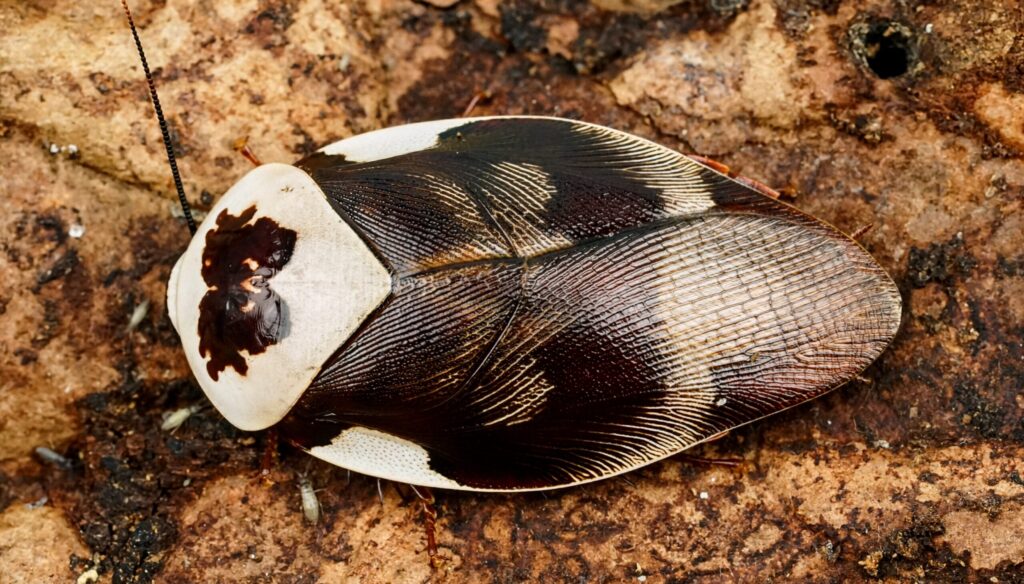
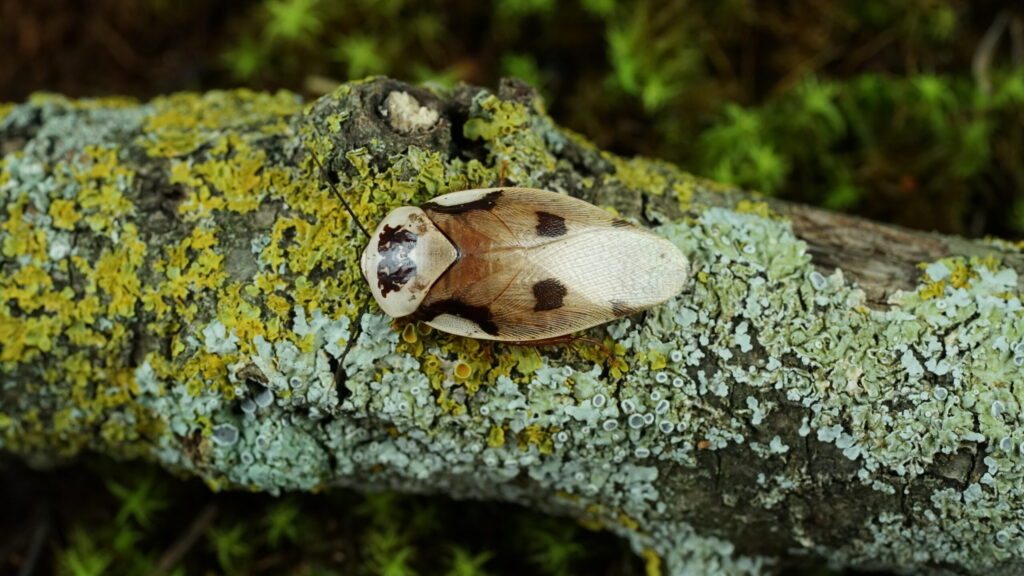
The resistance of the specimens is truly unparalleled, they have managed to resist periods of humidity and periods of complete drought (yes I had several doubts about how to keep them at the beginning) with the younger specimens that continued to change and grow without problems, truly spectacular!
Now, after some years I can confirm that the best condition for their breeding is to keep the substrate constantly and slightly moist or to give a more humid area and a drier one. In this way they will decide in which part of the box to stay more.
The offspring are made up of a very high number of tiny nymphs (compared to adults they almost seem like another species) which are extremely resistant and have a very low mortality rate.
Both females and males love to sit on the edges of the container or directly under the lid.
Gyna caffrorum
I have not experimented with extreme breeding conditions on them and I simply adjusted the humidity and the presence of objects in the box.
For them, I have never found a significant humidity gradient necessary, it is better to keep everything moist to the touch without leaving particularly dry areas (I know of people who have successfully raised the species in completely dry boxes, they have survived but I do not recommend repeating this… again, if you are in doubt, it is better to create a horizontal gradient by wetting only one side of the box).
The nymphs of this species are extremely more active, especially when compared to those of Gyna centurio. They are much more colorful, plump and tend to ignore any furniture placed in the box. Unlike the centurio they are less attracted to bark and prefer to run/bury themselves directly in the leaf litter.
Be careful, adult males and females are much more agitated than their sister species, it will not be strange to see them leave for the box or fly directly into the room when it is opened.
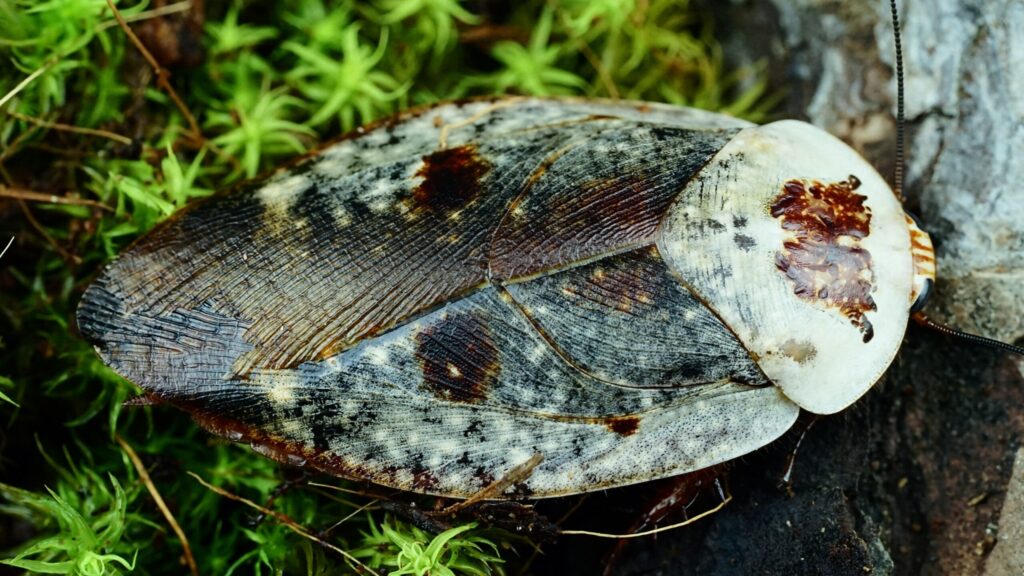
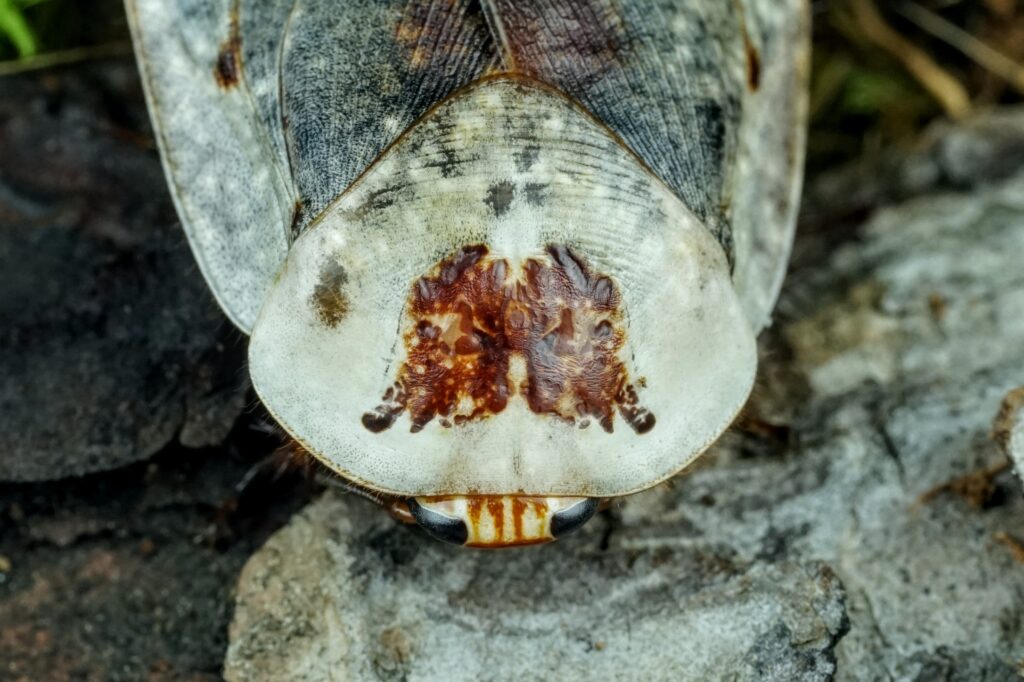
Their offspring will consist of a significantly smaller number of nymphs than the centurio, but of larger size. This will allow them to reach reproductive size earlier, compensating for the smaller number of young with a smaller generation gap.
PS the colors of the adults are indescribable, probably one of the most beautiful species ever
Gyna capucina
The largest species in the genus in breeding! I have had females that were just over 4.5cm measured from the anterior end of the pronotum to the tip of the wings.
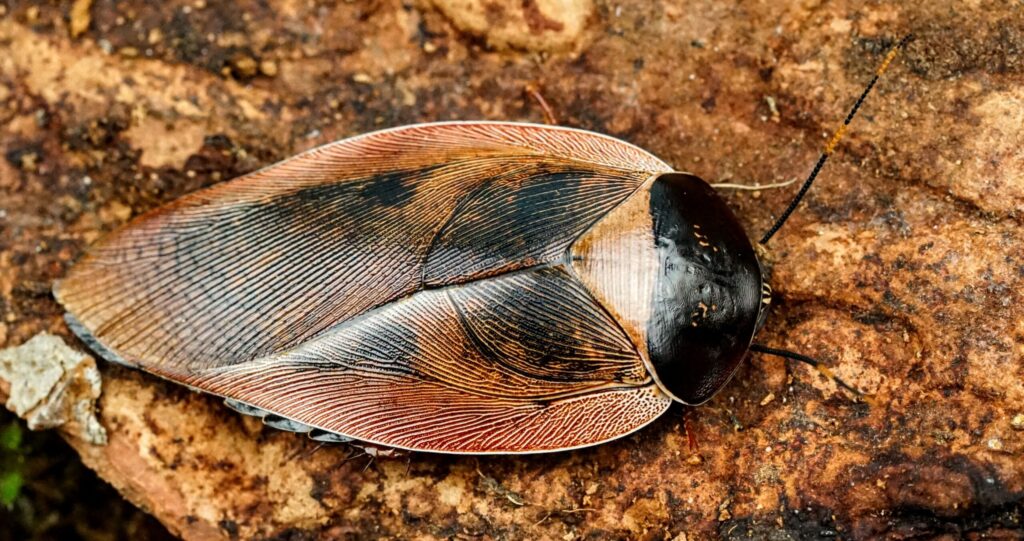
Given their size, their life cycle will be slightly longer than the others seen so far, with females maturing extremely late compared to males.
Their breeding is not particularly difficult, I always use a box developed in length, I provide greater humidity on one side of the box (they appreciate the gradient very much, if you can never leave the box humid at the same level), lots of dry leaves to act as shelter and a diet with a higher protein intake.
Let’s look at the sore points in their management one by one:
- Males develop MUCH BEFORE females. If you start with a few specimens, you should ask the breeder to select females that are much further along in development or particularly small males in order to have a greater chance of obtaining a mating. But be careful of one fact: in this species, much more than in others, I have found a great variability in the size of adult specimens with males and females comparable to adults of Gyna caffrorum, and siblings, born together and matured a couple of months later, even 1 or 2 cm larger. If the breeder does not satisfy your requests, you should separate males and females and keep the latter at slightly higher temperatures than the siblings, in order to speed up their cycle. To give you an idea, of the first generation of nymphs born in my breeding, no male was able to mate with females of the same age, they all became adults and died before a single one of them could become an adult in turn (fortunately I also had younger males that reached maturity at the same time as the older females).
- They suffer greatly from overpopulation. I have not yet been able to experience this point (and I hope I never will), but many breeders have noted sudden deaths or losses of entire colonies at population densities comparable to normal colonies of Gyna centurio or caffrorum (for example).
- They have an extreme need for proteins. Compared to other species in my possession, capucins are literally crazy about cat biscuits. Their presence in the diet must be significant, otherwise there will be slowed development of the specimens, loss of the young (therefore abortions by the mothers) and even cannibalism. I was amazed when I found the last old female of the first generation literally devoured alive with the nymphs that entered her body to consume the soft tissues while she was still wriggling and trying to fly or escape. I have never seen this behavior in any other species of cockroach bred and it completely disappeared once the weekly protein quota was increased. Despite this, the biscuits are literally assaulted as soon as they fall into the substrate.
NB do not overdo it with kibble and wet food as they could attract mites or other scavengers. As soon as possible I will upload a text in which I talk about my experience with the elimination of mites from some of my colonies.
Gyna lurida
I can’t say much about them, I’ve had them for a short time and I’m adopting a set-up and a breeding style identical to that of Gyna caffrorum. The coloring of the nymphs, their lifestyle, the hyperactivity of the adults and their method of reproduction are the same, therefore I think it’s valid to use the same precautions.
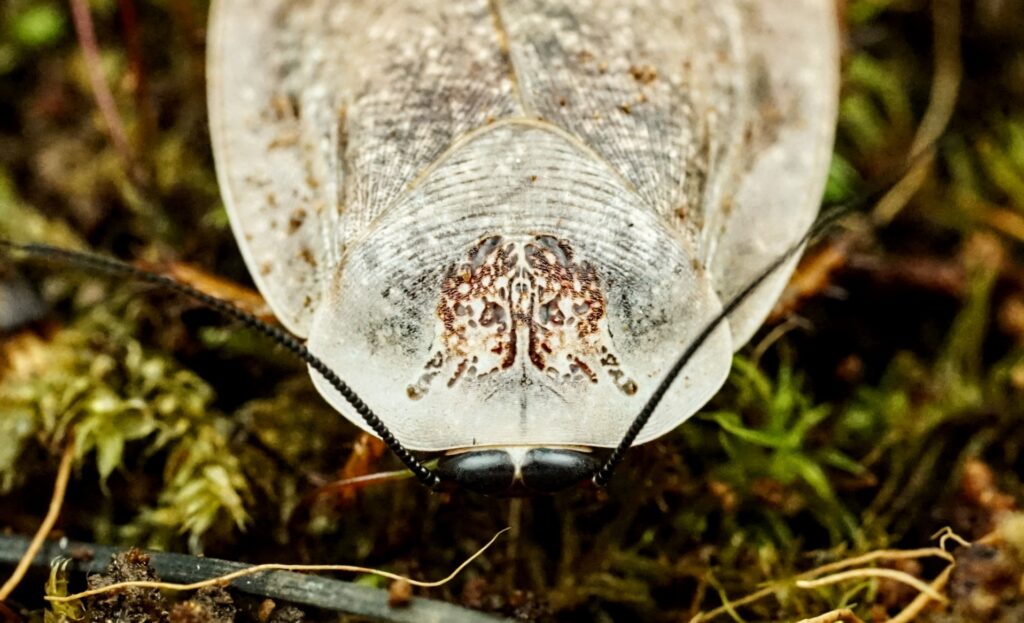
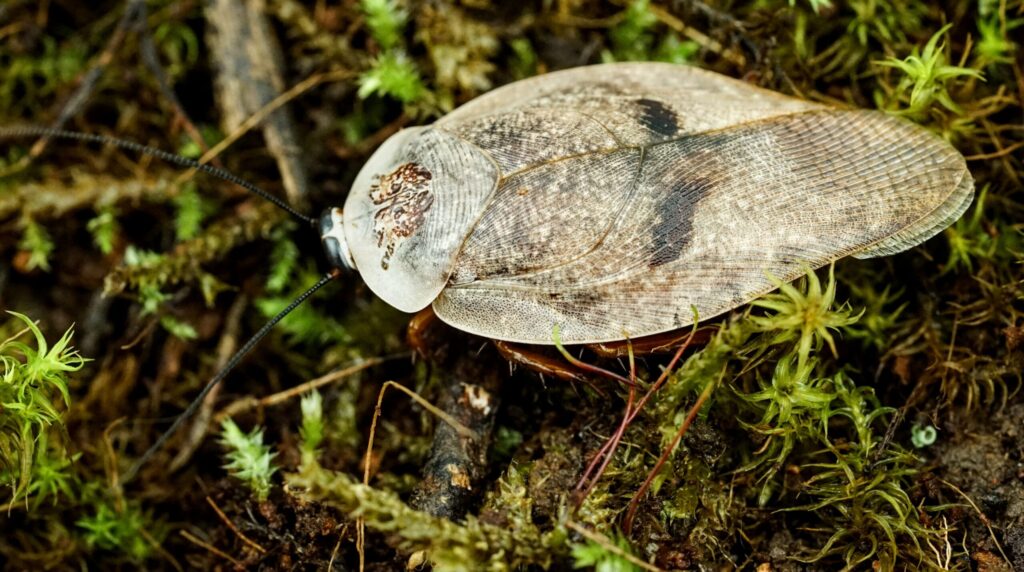
Note the two black spots on the tegmina, they are usually more marked in the male and less present, or completely absent, in the females.
Gyna bisannulata/sculpturata
I hope to be able to write something about them in the next few years, they are two species that I appreciate a lot but that I have not yet managed to find. If so, I will update the site!
There are a lot of interesting questions about this amazing genus, such as their flying abilities, the method of folding the ootheca, the myrmecophilous lifestyle and more. Since there is not infinite space in the breeding sheet I think it is appropriate to write pages specifically, as soon as they are ready we will add the links below, in order to facilitate the reading.
Happy breeding to all!
Card and photographs by
Lorenzo Pelicella

